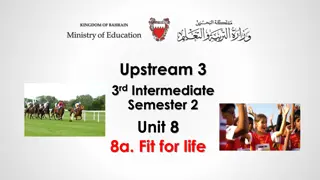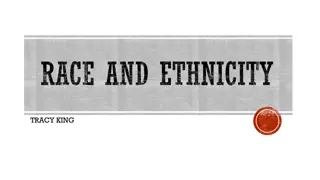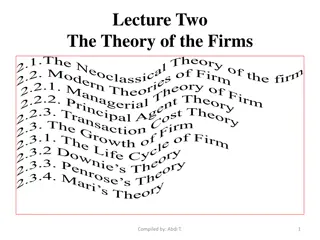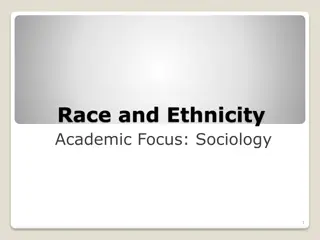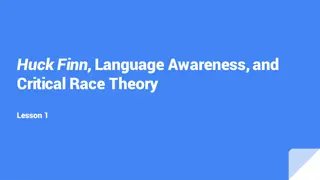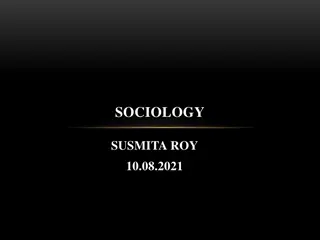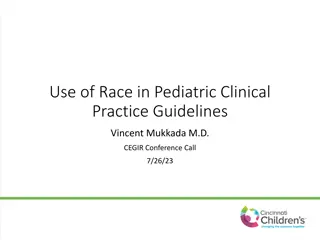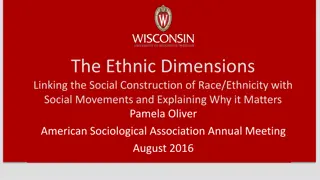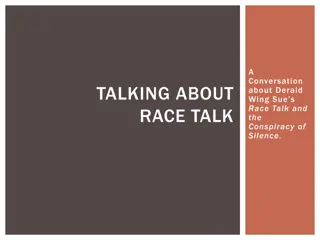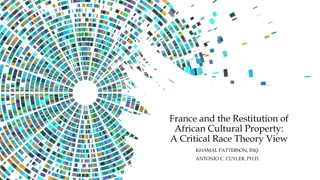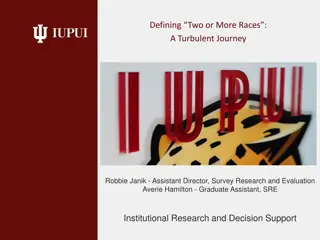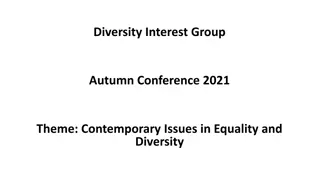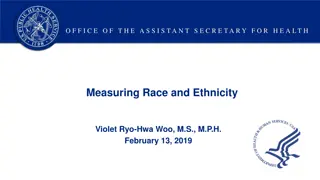The Impact of Minstrelsy on Race Theory
The article explores the historical connection between minstrelsy, blackface, and race theory. It delves into the origins of minstrelsy, the use of blackface as a mask to mock authority, and how minstrel performances reinforced racial stereotypes, contributing to the dehumanization of African Americans. It discusses the intertwined relationship between slavery, commodification of black culture in minstrelsy, and how these performances perpetuated white supremacy and rationalized violence and segregation. The article also touches on the critical race theory perspective, highlighting the socially constructed nature of race and its impact on white population interests.
Download Presentation

Please find below an Image/Link to download the presentation.
The content on the website is provided AS IS for your information and personal use only. It may not be sold, licensed, or shared on other websites without obtaining consent from the author.If you encounter any issues during the download, it is possible that the publisher has removed the file from their server.
You are allowed to download the files provided on this website for personal or commercial use, subject to the condition that they are used lawfully. All files are the property of their respective owners.
The content on the website is provided AS IS for your information and personal use only. It may not be sold, licensed, or shared on other websites without obtaining consent from the author.
E N D
Presentation Transcript
THE EFFECTS OF MINSTRELSY IN RACE THEORY Rachel Bierly
Introduction What is critical race theory History of Minstrelsy What is blackface How race theory and minstrelsy tie together Body Impossible choreographic analysis of Othello
Critical Race Theory: Origins, Importance, and application Definition: the view that race is socially constructed and functions to maintain the interests of the white population that constructed it. CRT goes back much further, however the movement officially organized itself in July 1989 A valuable perspective on race and racism in America. Inspired by the American civil rights tradition through figures such as M.L.K, Jr. and W.E.B. Du Bois. Advanced theoretical understandings
History of Minstrelsy Concept of Minstrelsy started in the mid 20thcentury Early minstrelsy shared three primary characteristics: invocation of the ethnically and racially exotic/primitive ; absurdity, irreverence, and recklessness, and longing for an ideal rural paradise. 1843 Blackface performers came together in a single troupe and called themselves, Minstrels. Officially started in the abolitionist movement which turned the attention to free blacks Most Minstrels were Irishman performing black characters
Blackface Primary function was to act as a mask and invoke the other. Allowed actors and artists to hide behind a caricature while protesting and mocking the powerful without fear of retaliation. Performers could safely question authority while claiming to be acting out authentic African American expressions. Some white performers augmented their noses and other features when performing to look more stereotypically black. Would always be Janus-faced, allowing performers to speak freely against the interests of the powerful. Dangerously dehumanized blacks by introducing and reinforcing racial stereotypes. Prevented blacks from representing themselves.
Race theory and Minstrelsy Slavery was commodification of black labor; minstrelsy was the commodification of black culture. Depictions of blacks in minstrel performances were exaggerated, dehumanizing, and inaccurate. Blackface minstrel performers reflected and reinforced white supremacy. It s an assertion of power and control and allows a society to routinely and historically imagine African Americans as not fully human. It serves to rationalize violence and Jim Crow segregation. David Leonard Portrayed negative stereotypes about African Americans Blackface was in theaters and film industry. The Birth of a Nation, characters were unscrupulous and rapists Stereotypes became so powerful they became a recruiting tool for the Ku Klux Klan
Documentary video: Historical Reflections of Bias Ethnic Notions Documentary 44:25 45:25
Body Impossible: Chapter three American Ballet Theatre and San Francisco Ballet s Othello: Lar Lubovitch choreographed ABT and SFB s co-production of Othello in 1997, where there was an absence of black male dancers in ABT. Desmond Richardson would perform the part of Othello and when he wasn t, alternate casts were painted in bronze face and body makeup. Othello compels a consideration of the haunted and unexamined relationship between blackface, virtuosity, and racial melodrama in ballet. In Richardson s absence, the casts are painted in blackface to supplement an attempt to affectively recover his virtuosity. Blackface functions as one of several intertwined elements in the attempt to embody the Other. Richardson s performance of Othello is an instantiation of black- on-black minstrelsy.
Choreographic Analysis of Othello Background about the piece Abrupt Percussive Strong Quick Silly / Showing off Sustained Tapestries Anger Bound Controlled Sadness Othello ballet. San Francisco Ballet. Desmond Richardson and Yuan Yun Tan Duet Othello and Desdemonda; wedding masque with children.; solo Desdemona
Conclusion Why it is important Blackface is still being portrayed today The appeal of blackface was declined after the 1930s and continued into the Civil Rights Movement. Example of blackface today: in 2012 at the Oscars ceremony, blackface appeared on television skits, and wearing blackface to dress up as famous African Americans during Halloween. David Leonard says, Blackface is part of the toxic culture of racism. Stereotyping is representational violence
Citations Clark, Alexis. How the History of Blackface Is Rooted in Racism. History.com, A&E Television Networks, 13 Feb. 2019, www.history.com/news/blackface- history-racism-origins. Ethnic Notions, California Newsreel, 20 Nov. 2014, fod-infobase- com.librarylink.uncc.edu/p_ViewVideo.aspx?xtid=49775. Graves, Nadine George-. 3. In Ballroom, Boogie, Shimmy Sham, Shake: A Social and Popular Dance Reader, University of Illinois Press, 2009, pp. 55 71. Purdue Writing Lab. Critical Race Theory // Purdue Writing Lab. Purdue Writing Lab, owl.purdue.edu/owl/subject_specific_writing/writing_in_literature/literary_theory_ and_schools_of_criticism/critical_race_theory.html. Scott, Ariel Osterweis. Body Impossible: Dynamics of Race, Sexuality, and Virtuosity in the Dance of Desmond Richardson. University of California, Berkeley, 2011. Summary of The History of Minstrelsy USF Library Special & Digital Collections Exhibits. Omeka RSS, exhibits.lib.usf.edu/exhibits/show/minstrelsy.
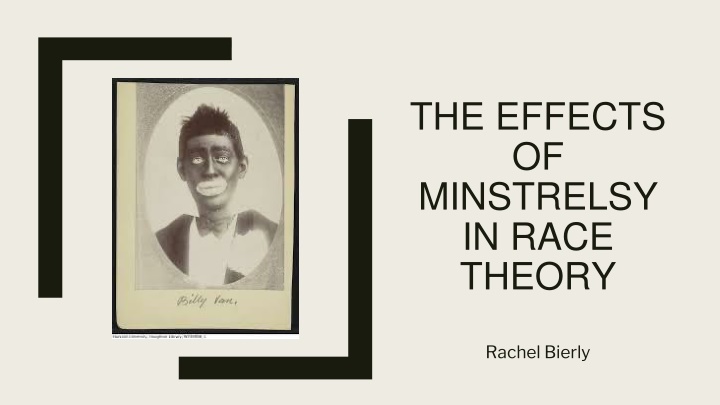

![❤[PDF]⚡ Escaping from Eden: Does Genesis Teach that the Human Race was Created](/thumb/21697/pdf-escaping-from-eden-does-genesis-teach-that-the-human-race-was-created.jpg)
